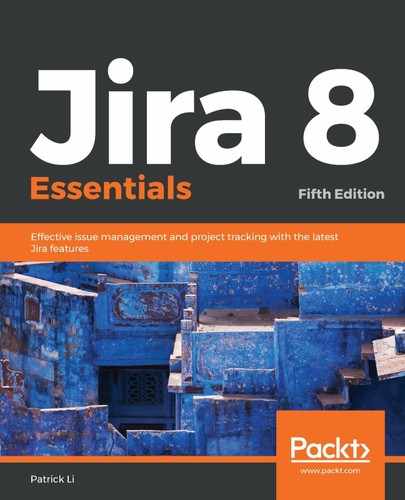As you have already seen, fields are used to capture and display data in Jira. Fields can also have behaviors, which are defined by field configuration. For each field in Jira, you can configure its behaviors, which are listed as follows:
- Field description: This is the description text that appears under the field when an issue is edited. With field configuration, you can have different description text for different projects and issue types.
- Visibility: This determines whether a field should be visible or hidden.
- Required: This specifies whether a field will be optional or required to have a value when an issue is being created/updated. When applied to select, checkbox, or radio button custom fields, this will remove the None option from the list.
- Rendering: This specifies how the content is to be rendered for text-based fields (for example, a wiki renderer or a simple text renderer for text fields).
A field configuration provides you with control over each individual field in your Jira, including both built-in and custom fields. Since it is usually a good practice to reuse the same set of fields instead of creating new ones for every project, Jira allows you to create multiple field configurations, by means of which we can specify different behaviors on the same set of fields and apply them to different projects.
We will be looking at how to manage and apply multiple field configurations in the later sections of this chapter. But first, let's take a close look at how to create new field configurations and what we can do with them.
You can access the field configuration management page through the Jira administration console:
- Browse to the Jira administration console.
- Select the Issues tab and then the Field configurations option. This will bring you to the View Field Configurations page.
